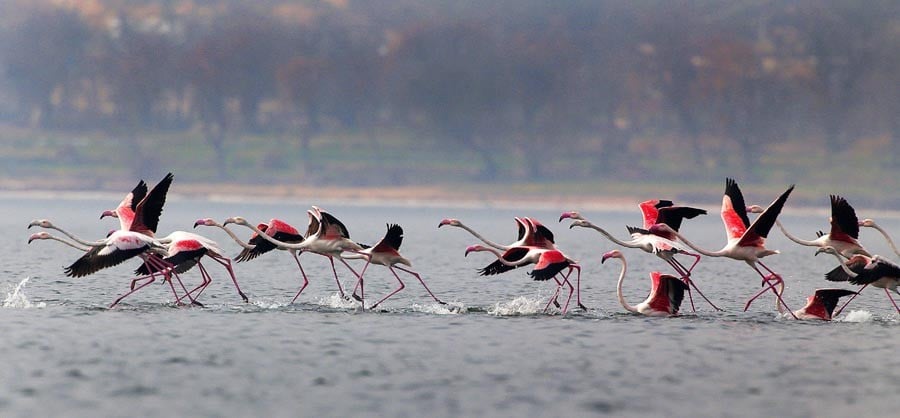
With the onset of winter, the migratory birds transform the dead surface of the brackish Uchali Lake into a cacophony of noises -- alive and vibrant

In the words of naturalist and author Scott Weidensaul, "Migration is indeed the one truly unifying natural phenomenon in the world, stitching the continent together in a way that even the great weather systems, which roar out from the poles but fizzle at the equator, fail to do."
With the onset of winter, the migratory birds in continuation of an ancient cycle transform the dead surface of the brackish Uchali Lake into a cacophony of noises -- alive and vibrant. These winged beauties are an annual feature across the wetlands of Pakistan, arriving here from countries as far as Siberia and Mongolia, making the perilous journey over the harshest of mountain ranges for the promise of the relative safety of warmer temperatures. Around 45 species of migratory birds are expected to arrive at Uchali this season.
The Uchali Complex, located in District Khushab, in the midst of the Salt Range between the Indus and Jhelum Rivers, is famous for having a grouping of three small lakes between 700 and 980 metres above the sea level. These lakes include Khabeki, Uchali and Jhalar which have been declared as wildlife sanctuaries and designated as a Ramsar site of international importance under Ramsar Criterion 1 (b). These lakes are habitats to a wide variety of wintering waterfowl including the endangered species of white-headed duck Oxyura leucocephala, Ferruginous Duck Aythya nyroca, Greylag Goose Anser anser and Greater Flamingoes Phoenicopterus rube.
The three lakes are surrounded by privately-owned agricultural fields and human settlements -- posing an imminent threat to the migratory patterns of these birds. Above all, the main pressure is the over-extraction of ground water for irrigation purposes, due to which the ground water table has dropped to an alarming level leading to the degradation of the overall conditions of these lakes. Off-season unscientific agricultural practices in winters, deforestation of reserve and shamilat forest for fuel wood collection and an increase in anthropogenic activities around these protected areas have made these already strenuous journeys of the migratory birds even more challenging and in many cases life threatening.
But, according to Dr Farooq Ahmed, a local biodiversity expert, the birds have arrived in great numbers this winter; reason enough to cheer bird enthusiasts of the country. Due to continuous efforts of WWF-Pakistan in curtailing habitat destruction and hunting, the migratory birds have returned in huge flocks this season. WWF-Pakistan has been monitoring the patterns of these migratory birds in Soon valley alongside raising awareness on the plight of these birds by establishing Community Based Organisations (CBOs).
Information material, including books, posters, fact sheets and brochures for sustainable tourism in the region, are also available at Khabeki Lake Information Centre. According to the organization, around fifty thousand migratory birds have arrived at Uchali Lake indicating an increase of twenty thousand as compared to the previous year.
As for the visitors wanting to enjoy a serene moment, close to a heavenly experience, they should wait on the banks of the lake for the golden hour to descend. When the sun makes it descent behind the hills around the lake, surreal golden rays spread over the face of the lake creating divine magical moments for the eyes and the soul.